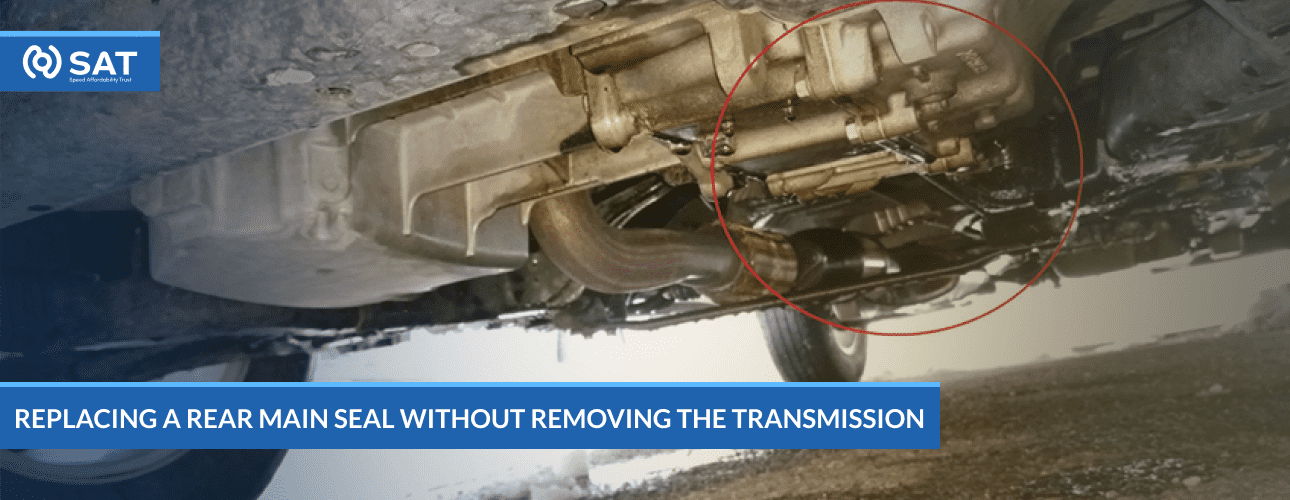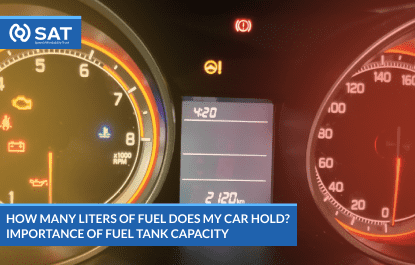
Bridgestone Vs. Michelin Tires – Who’s the Boss
Bridgestone and Michelin are the two industry giants of the tire market.

A rear main seal is located beneath the vehicle’s engine components. The prime function of the rear main seal in your vehicle is to prevent the oil from leaking between the block and the crankshaft. This seal is designed to last for many years, even a lifetime, under normal circumstances. However, it also comes with its flaws. Because of its hidden location and placement at the back of the engine, oil leaks are natural.
Typically, the process of repairing the rear main seal requires the transmission to be removed. However, eliminating the transmission is a tricky process. Fortunately, there are ways to replace a rear main seal without removing the transmission. In this blog, we will go through a detailed discussion on how to carry out the process.
To better understand how to replace the rear main seal, let’s discuss what it actually is. The rear seal is installed at the rear of your vehicle’s engine. Its prime purpose is to help the crankshaft as it prevents the oil from leaking into the crankshaft. If the rear main seal malfunctions, the oil will leak fast and dry up, causing a stain and destroying the system.
Knowing that your vehicle has a faulty rear main seal can be quite frustrating. This is because most drivers are unaware of this. This component is present underneath the car, and it can become very hard to identify its symptoms.
They are located at a hard-to-reach place because they are not intended to be repaired or replaced. But how can you tell if the rear main is leaking?
The prime symptoms of a rear main seal leak include:
However, oil leaks can occur from various parts of the engine, including the oil filter housing, PCV, valve cover gasket, head gasket, and so on. Therefore, diagnosing a rear seal failure can be tricky.
Apart from the rear main seal’s lifespan, the following factors cause it to get damaged.
Below we discuss the most common causes of rear main seal leaks.
Because the crankshaft is rotating constantly against the rear main seal, it is common for the seal to wear down over time and leak. As this happens, you will start to notice a small leak becoming more prominent over time. Sometimes, other factors also contribute to expanding the leak so quickly.
If there is a small or gradual leak, it is probably because of normal wear and tear over time. You can take preventive measures and ensure maintenance to prolong the life of the rear main seals, such as through frequent oiling and changing filters.
When the engine runs on low oil levels, many other components of the car are starved of oil and lubrication. It can cause more friction and heat inside the engine that can take a toll on the rubber seal, causing it to wear down and leak.
Low oil levels can lead to many other issues, including worn main bearings. Therefore, it is important to keep your engine oil topped up.
The function of the main bearings is to hold the crankshaft in place, allowing it to rotate in a fixed position. The main bearing is made of metal and can face wear and tear from friction of the crankshaft,
As these bearings wear down, they can create some slope in the crankshaft, allowing it to move slightly. It can put extra strain on the main seal, causing it to deteriorate quickly.
Bad main bearings can also cause several performance-related issues, which can require a new bearing and possibly a new crankshaft. Because of the bearing location, the engine will have to be torn apart, making the repair costly.
If the crankshaft is misaligned, it will not rotate in a perfect circle, putting extra stress on the rear main seal. Damage or misalignment of the input shaft/flex plate can also stress the seal and cause failure.
The engine produces the ” blow-by gasses ” when gas, oil, and exhaust fumes pass the piston rings and end up in the crankcase.
The function of PCV is to vent this bad gas back into the intake tract. This reduces emissions and releases pressure created in the crankcase. A clogged PCV valve prevents the blow-by gases from venting out of the crankcase, which can cause pressure to build up inside the engine. As a result of excess pressure, the rear mean seal can slip out of place, ultimately causing an oil leak.
Replacing the rear main seal can be a lengthy and daunting task. You will also need special tools to carry out this job. A professional mechanic can assist you, but replacing the rear main seal can cost a lot.
Usually, the transmission must be removed before reaching the rear mean sea. However, you can do this without removing the transmission.
Here are some of the steps to replace a rear main seal without removing the transmission
The first step in replacing a rear main seal without removing the transmission is removing the engine’s battery. Although this is not part of removing the transmission, it is important to ensure safety.
Take out the battery by disconnecting both negative and positive terminals that are connected to the circuit. To generate more working space, you can disengage the exhaust. This way you will feel more comfortable.
A drive shaft, also known as a propeller shaft, is a long rod that transmits torque from the transmission’s output shaft to the rear differential in rear-wheel or all-wheel-drive vehicles. In order to replace the rear main seal, you will have to take the driveshaft off. After that, you will need to find the flex plate. It is a round metal disc with multiple holes in it. You can remove the flex plate with the use of a wrench and a screwdriver. This way you will be able to reach the rear main seal easily.
Removing all the extra components is the primary job you have to do when replacing a rear main seal. Generally, the seal is pressed into the engine block through bolts. You can see the crankshaft in the middle that comes into action when the engine is running.
You can see a pilot bearer at the center of the crankshaft. The seal hood normally has 6 to 10-mm bolts that you must remove. After removing the entire set of bolts, you need to remove the seal hood. Be careful when handling the housing of the seal as it is made with fragile material of aluminum, making it prone to cracks and dents.
The seal normally comes out with the hood, but you will have to do it yourself if it does not. If the seal is stuck to the crankshaft, poke the crankshaft, and the seal will be removed. This is the rear main seal that you need to remove. Remove it and install the new one. This way, you can replace the rear main seal without removing the engine.
You might find the task too difficult to do on your own. However, you can save a lot of money with a toolbox and some guidance. If you are still unsure, there is no harm in being safe and taking the service of a professional. However, ensuring regular maintenance is important to ensure the safety and longevity of your vehicle. It also lets you diagnose the issue sooner and fix it promptly.

Bridgestone and Michelin are the two industry giants of the tire market.

Considering the recent developments in the world order, oil prices have increased significantly over the last decade. During such times, being well-researched about your car fuel tank and its features can be extremely useful in cost-cutting. Knowing about your car’s fuel capacity may not seem too significant at face value, but such a basic factor […]

Subaru is widely known for being a highly reliable manufacturer of vehicles that are simultaneously safe and stylish. Because of Subaru Models‘ performance and reliability, these vehicles have a loyal fanbase that swears by them. However, there are some limitations with their boxer engine, and one of the faults in some Subaru vehicles is the […]